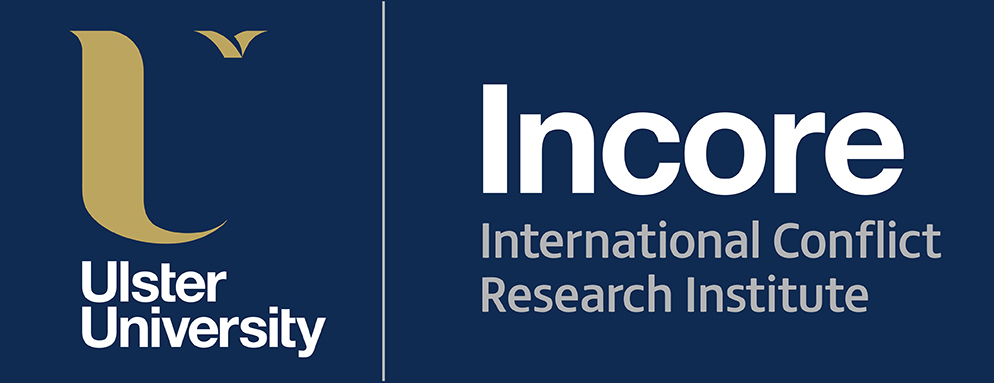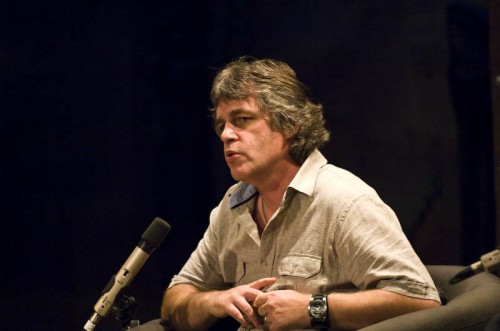Months on from the paramilitary ceasefires of 1994, the Northern Irish poet and playwright Damien Gorman (pictured above) wrote an article in Fortnight Magazine. It began:
Rightly or wrongly, I have a sense that the people of Northern Ireland are beginning to ‘come to’ – emerging from paralysis with the stiffness still in their movements and in their hearts. In gathering resources as a community for whatever’s ahead, it would be useful, too, to gather the individual stories of what has happened. Some of these will be hard to listen to, and some hard to tell, but most people seem able to agree that there is a need to be neighbourly to one another now. What neighbours do when something has happened to them is visit each other with urgent, honest accounts. It should be possible to gather these accounts across the range, as a way of starting to piece together what has happened; as a means towards weaving a better future story.
The following year, in an article in the Belfast Telegraph, he wrote:
Because Northern Ireland is the way that it is, there is no one who speaks for us all. There is no one who embodies the soul of the place, and can tell its true story, for it is a splintered story. We all carry shards of it with us. For this reason I feel that the story of the “Troubles” needs to be pieced together from as many of us as possible.
In order to make progress on this broad aim, Gorman established an organisation called An Crann/The Tree, which had a long-term vision for the creation of a ‘living museum’, as a ‘centre where the stories of the living can be told.’ While I never worked directly with Gorman, as a young member of staff of that organisation in the late 1990s, I was continually inspired by his prescient vision of what might be possible in terms of creating a space in which the ‘splintered stories’ of the conflict might sit alongside each other. It never felt like an easy, or even a comfortable task, but it always felt important.
In 2002, following a consultation process, Healing through Remembering published a report (available here) with a set of recommendations on dealing with the past. One such recommendation was:
A storytelling process known as ‘Testimony’. Stories and narratives will be collected from all who wish to tell of their experiences of the conflict in and about Northern Ireland. These stories—collected by those already undertaking this type of work and by community groups through a flexible but standard method—would form part of an archive housing the stories of the past and serving as a vehicle to learn lessons for the future.
In December 2013, the ‘Proposed Agreement’ drafted by Richard Haass and Meghan O’Sullivan, contained the following:
The Northern Ireland Executive shall therefore enable the establishment of an archive for conflict-related oral histories, documents, and other relevant materials from individuals of all backgrounds, from Northern Ireland and beyond, who wish to share their experiences connected with the conflict. The operation of this archive will be free from political interference. It will not seek to interpret people’s narratives or attempt to create any single narrative of the past. It will, rather, be a collection of individual narratives—a vital primary resource for the future historians, genealogists, and writers who will interpret the myriad histories of Northern Ireland.
And so, it seems that these ideas have been in the ether for some considerable time. No doubt, in the intervening years, others have also proposed or visioned such processes and places where a diversity of voices, experiences and opinions could be told, heard, stored and shared. The proposals above all contained elements of ambitious story gathering processes, with a view to placing of them within a centralised space (however that is envisaged) where others can engage with, and hopefully learn from them.
What we know now is that, in the intervening years since Damien Gorman’s proposals, dozens of storytelling projects have collected hundreds of individual accounts of the conflict in and about Northern Ireland. As a society, we are free to explore and debate the merits of a large-scale storytelling process, which would aim to capture an extensive and diverse range of personal stories. However, we should also acknowledge the quality work that has already been done, at community level, to gather testimonies within local communities, on thematic issues, and focusing on particular events. Since my early days at An Crann/The Tree, I have witnessed a real generosity and collegiality between those who have lessons to share about the challenges of gathering and sharing of our disparate and contradictory stories of the conflict. This sense of neighbourly-ness that Gorman wrote of has, in my view, ensured that so much of the work of gathering stories has been done with sensitivity and respect for the individual, and their lived experience. The placing of these diverse stories in one dedicated site – a virtual site in the case of the Accounts of the Conflict project – requires the same level of sensitivity and respect for the individual story teller, and the story itself.
- Piecing the Diverse Narratives of the Past Together - 19th May 2014






